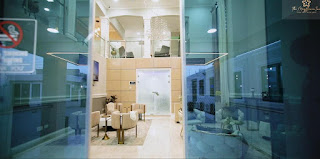The Origin & History of The FairGround
Fairs in this country have a long and ancient history, deeply rooted in tradition.
The word fair derives from the Latin “feria”, meaning party and
once upon a time the Romans are credited with introducing fairs.
It is now generally accepted that their origin comes from the pagan customs of the peoples who first settled on this land; their seasonal gatherings, both commercial and festive, contained within them the essential elements of the fair.
The Romans did much to promote fairs by improving trade and communications throughout the country.
In the centuries following the departure of the Romans, many fairs and other festivals were included in the calendar of the nascent Christian Church.The papers granted by the sovereign gave him a fair legal status and an increasing importance in the economic life of the nation.
Merchants and traders from Europe, the Middle East and elsewhere were drawn to the great fairs of the Middle Ages which brought with them a wealth of goods.
The large number of these showmen, 4860 hired between 1200 and 1400, attracted not only merchants but also entertainers: jugglers, musicians and goblets, ancestors of today's showmen.
The Black Death of 1348-49 brought about a new type of fair.
To stem the increase in wages caused by the shortage of workers, Edward III establishes the Workers' Statute.This required all able-bodied men to report annually to be hired on a fixed salary.
These gathering or rental fairs were held mainly around Michealmas, at the end of the agricultural year.
By the early 18th century the commercial aspects of charter fairs had disappeared and most fairs consisted almost entirely of entertainers, acrobats, illusionists and theater companies plying their trades on the fairgrounds.
It was at this time that the first amusement park rides appeared, small, crudely built of wood and operated by gangs of boys.
In 1868, Frederick Savage, a successful agricultural engineer from Kings Lynn, devised a method of driving steam-powered rides.His invention, a steam engine mounted in the center of the carousel, would transform the trade show industry.
Freed from the limits of muscle power, rides could be bigger, more spacious and more richly decorated.
The showman's demand for novelty was met by the ingenuity of Savage and other engineers.
In the wake of the steam revolution, an incredible variety of new models and rides have appeared.
These rides were the forerunners of today's incredible thrill rides, with innovations over time such as electric lighting, electric motors, hydraulics, and more. allowed the rides to evolve into the fantastic devices seen today at any local fairground





Comments
Post a Comment